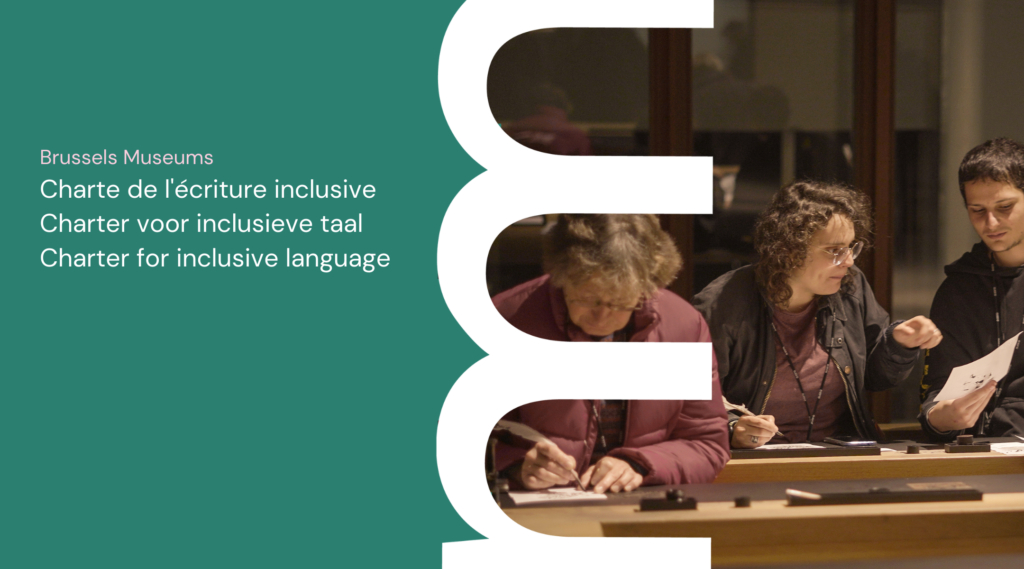
Brussels Museums Inclusive Language Charter
Brussels Museums Inclusive Language Charter
What is Inclusive Language?
Inclusive or gender-neutral language first aim is to reduce gender stereotyping by paying more attention to how certain images and words can be (unconsciously) discriminatory or biased and how to avoid such formulations. Besides gender, inclusive language in English actively avoids ableist and racist phrasings. We strive for a representative, gender-equal and non-sexist language use.
The discussion on inclusive writing has been a hotly debated and controversial topic among our French-speaking friends for years. French has a grammatical gender, and the masculine version of words and adjectives is often equated with neutral language use. However, this so-called “neutrality” is historically and politically determined. In the 17th century, a clear masculinization of the French language started, e.g., by giving priority to the male gender in agreement rules (le masculin l’emporte sur le féminin) or the erasure of female versions of certain professions (e.g., poétesse). Brussels Museums is a trilingual organization. This charter therefore addresses our French, Dutch, and English language use, each of which has its own specificities. This charter is written in a social context that questions gender norms in the hopes of improving gender equality.
How we choose and use our words has an undeniable impact on our everyday representations: they feed certain (gender) stereotypes. This charter is an attempt to restore balance to a language system that is constantly evolving. We do not claim to possess the absolute truth on these topics, nor are the recommendations we write strict laws. What we do want to do is to expose, through simple reflexes, internalized rules that often render women and non-binary people invisible by equating the masculine with the universal. This is a document that will continue to evolve throughout the years.
Why an inclusive language charter for the museum sector?
Museums are full of representations. Their neutrality is being increasingly questioned, and rightfully so. We believe that museums can be spaces of dialogue and shared knowledge, essential to move towards a more egalitarian society. By examining the language, texts, and images they use, museums actively participate in the conversations that animate their audiences and create space for voices that are still too often underrepresented.
In 2020, Brussels Museums launched the awareness-raising project Open Museum on diversity and inclusion. This project investigates how museums can become safe(r) spaces where everyone feels welcome, regardless of gender, skin color, ethnicity, disability, sexual orientation, religion, economic status, education, or age. This multifaceted approach does not shy away from a critical analysis of the foundations on which museums were built. We want our cultural institutions to reflect the diversity that makes Brussels so beautiful. Communication and language are an integral part of that inclusion process.
Interested in developing your own charter? Attend our inclusive language training sessions (EN, FR, NL).
Contact:
[email protected]
An engaged initiative of Brussels Museums

